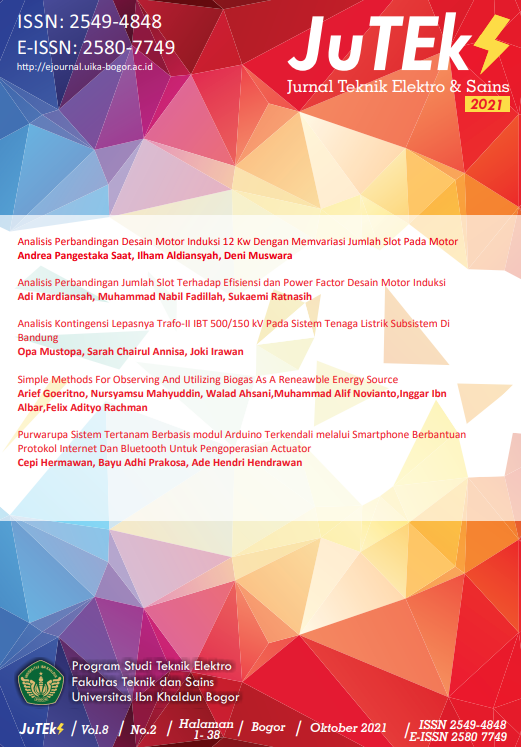Simple Methods for Observing and Utilizing Biogas as a Renewable Energy Source
DOI:
https://doi.org/10.32832/juteks.v8i2.15890Abstract
One combustible and burnable gas that can be created through an anaerobic fermentation process is biogas. An anaerobic process occurs when organic material, like animal dung, is processed in a digester (reactor) without the presence of oxygen. This observation's objectives are to (i) disseminate knowledge about the biogas production process and (ii) acquire a generation system for producing biogas. The observation methods are based on the use of an observation algorithm in the form of a flow chart, and it includes (a) observations related to various stages of choosing the type of installation, the requirements and processes for the formation of biogas observed and utilized from readily available organic materials, and influencing factors; and (b) observations related to the generation system for the production of biogas observed and utilized, including the physical reservoir, the amount of biogas produced, and the biogas utilized for supply to the electricity generator. The results of the observations related to the generation system, including the physical reservoir, the amount of biogas produced, and the biogas used for supplying the electricity generator, while the results of the observations related to the biogas production process, including the availability of installations, requirements and processes for biogas production, and influencing factors for the formation of biogas. Based on these findings, it can be said that the best period of time for biogas production is between 14 and 16 days, with a production volume of 6.0 m3 /day. While 0.64 m3 of biogas is needed for electric lighting, 0.30 m3 /hour of biogas at a pressure of 75 mm H2O is needed for cooking activities. While pure methane gas has an energy content of 8,900 kcal/m3 , the resulting calorific value is relatively high, ranging from 4,800 to 6,700 kcal/m3.


















